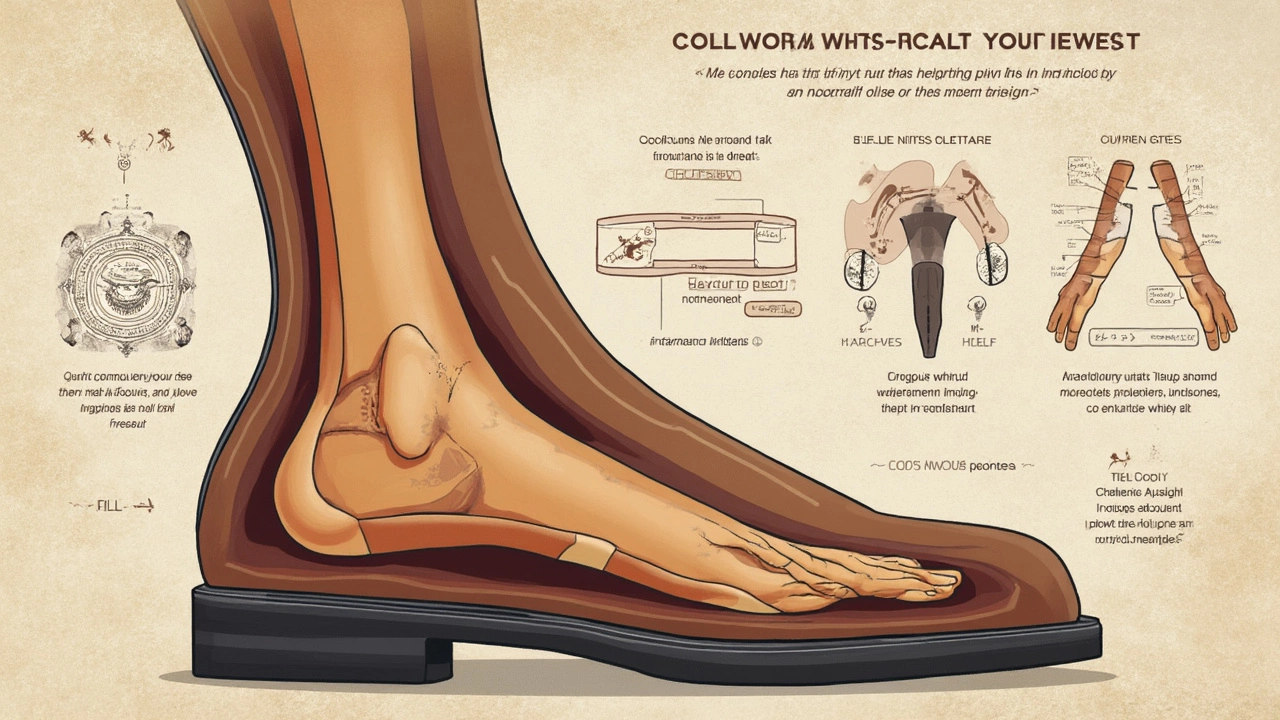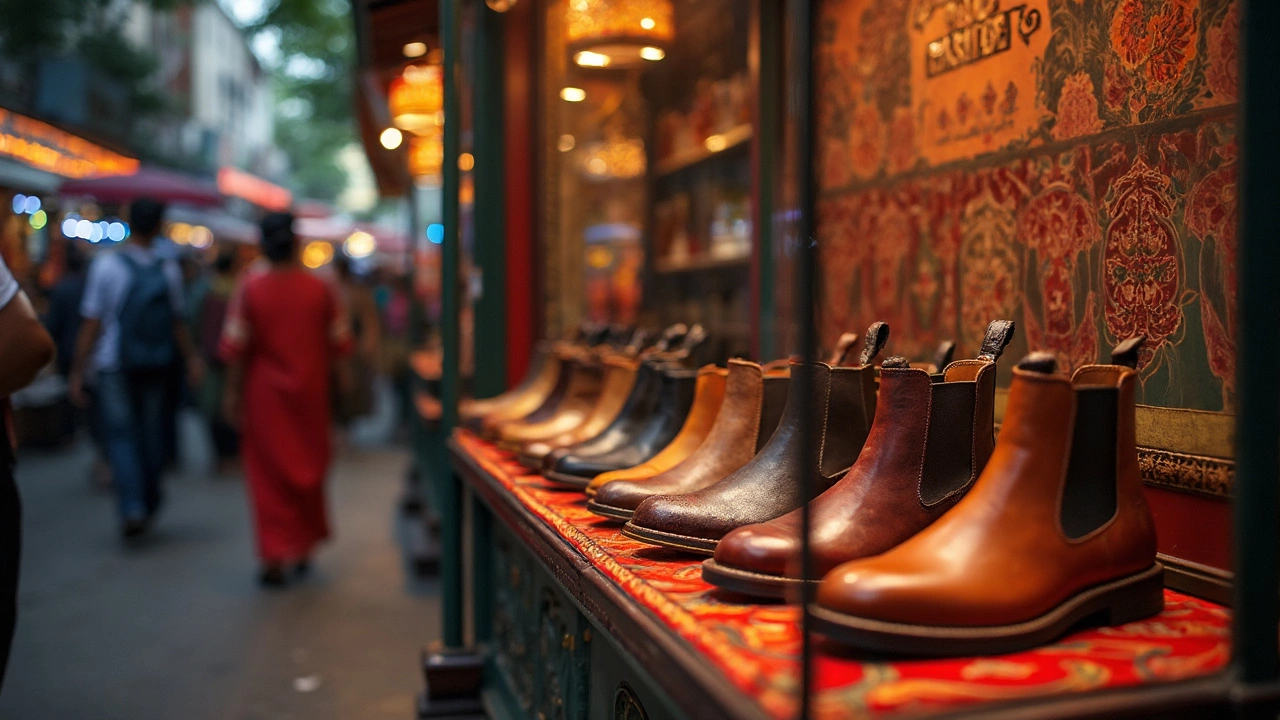Alright, so you just snagged a pair of those sleek Chelsea boots everyone's raving about, but now your feet feel like they're on fire. It's a real bummer, right? Well, you're not alone—this fancy footwear can look amazing but give your feet a tough time. Let's figure out why this fashion-forward choice often turns into a painful experience.
First off, Chelsea boots look dreamy, but they often trade off comfort for those sharp looks. It's like choosing the tight jeans over comfy sweatpants. The main culprit? They might just not fit quite right. Chelsea boots are notoriously tricky when it comes to sizing, and even a small misfit can lead to blisters or aches. So, paying close attention to your foot size and shape becomes super important even before you hit the checkout button.
- The Style vs. Comfort Dilemma
- Understanding the Fit: Why Size Matters
- Breaking Them In: Patience Pays Off
- Materials Make a Difference
- Taking Care: Tips for Happy Feet
The Style vs. Comfort Dilemma
When it comes to Chelsea boots, style and comfort often go head-to-head. These boots are iconic in the fashion world, loved for their sleek, ankle-hugging design and easy-breezy pull-on style. But let's face it, they're not exactly known for being a treat to wear at first, especially if you find your feet complaining more than complimenting.
Why is this tug-of-war so common? Well, the design of Chelsea boots prioritizes fashionable lines over foot-friendly features. They're typically made to look sharp and chic, which means you're dealing with a snug fit, potentially stiff materials, and a heel height that might take some getting used to. These factors can make the boots less forgiving, especially if your feet are on the wider side or have any specific niggles.
But hey, fashion doesn't have to be at odds with function. There are strategies to balance both. Opting for the right materials can be a game changer. Leather, for instance, is a popular choice because it's known to stretch over time, slowly conforming to your foot's shape. Suede is another option; it's softer from the get-go, but doesn't have the same water resistance, so you'll need to consider where you'll be strutting your stuff.
Finding that sweet spot between style and comfort with your Chelsea boots is all about understanding your own needs and being willing to experiment a bit. While it means you might skip some cutting-edge trends for something a bit kinder to your toes, remember—it’s about feeling good wherever those boots take you.
Understanding the Fit: Why Size Matters
Let’s talk about fit, because when it comes to Chelsea boots, size isn’t just a number—it's a game-changer. A pair of boots that’s slightly off in size can turn your day into an absolute nightmare.
Many women think they’re a certain size and just stick to it. But boots, especially stylish ones like these, can vary greatly depending on the brand and even the material. Women's boots are often designed with different foot shapes in mind, so it’s key to know not just your size but also your foot width and arch type. A boot that's tight in the toes or loose in the heel can cause all sorts of discomfort, from blisters to joint pain.
Here’s a hot tip: try boots on at the end of the day. Your feet tend to swell a bit as the day goes on, so this helps ensure a fit that won’t end up pinching. If you're shopping online, look for stores with generous return policies so you can try different sizes without stress.
If possible, measure both feet since they’re often not exactly the same size. And if you wear socks with your boots, bring them along when you're trying new pairs on. This little effort can save a lot of discomfort later.
| Common Size Conversion | US | EU | UK |
|---|---|---|---|
| Example Size | 8 | 39 | 6 |
Keep in mind that many brands offer a size conversion chart like the one above, which can help when you're dealing with international sizes. So, take a moment, understand your feet, and don’t rush the fitting process. Your feet will thank you.

Breaking Them In: Patience Pays Off
So you've got your hands on some snazzy Chelsea boots, but now it's time to make them feel like a second skin. Listen, breaking in new boots is like taming a wild horse—it takes time, a bit of effort, and a whole lot of patience.
First things first, start by wearing your boots around the house. Keep them on for short periods, like while you're binge-watching your favorite show. This helps your feet adapt to the new shoe and gently stretches any tight spots.
Here's a little helpful hack: wear them with some thick socks. It might not look stylish, but the cushion from the socks will relieve pressure points and help the boots mold to your feet. Do this over a few days, and you'll start feeling the difference.
- Wear them for an hour each day and gradually increase the time.
- Try flexing your feet and walking around to loosen up stiff areas.
- Consider gently heating tight spots with a hairdryer while wearing them to help the material expand.
It's tempting to take them out for a whole day on the first try, but trust me, resist the urge. Rushing can lead to aching feet and some nasty blisters. Taking things slow means you'll avoid painful surprises and eventually have some super comfy kicks.
Breaking in new shoes can feel like a drag, but when it's done right, the result is a pair of women's boots you'll want to live in. So keep at it—the comfort is totally worth the wait.
Materials Make a Difference
When it comes to Chelsea boots, the materials they're made from aren't just about looks—they can really mess with your comfort level, too. If your feet are screaming, the leather, elastic, or even the sole might be the bad guys here.
Leather, for instance, is a biggie in the world of Chelsea boots. It can be super stylish and durable, but not all leather is created equal. Full-grain leather, which is the best quality, is pretty breathable but might be a little stiff initially, making that breaking-in period kind of crucial if you want happier feet.
Then there's the elastic part of the boot, which is supposed to make slipping into them easy. But if the elastic is too tight or doesn’t stretch enough, it can pinch your feet or heel. Not fun. Look for enough stretch, so they hug your feet without squeezing like a vice.
And don’t forget about the soles. Some Chelsea boots come with rubber soles for extra grip, which is awesome if you're not into slipping and sliding on a rainy day. Rubber soles can absorb more shock, which makes them comfier for all-day wear. But if the boots are rocking a thinner sole, your feet might feel every bump in the road.
Also worth a peek are any lining materials. A lined interior can make boots feel softer inside, but if the lining is synthetic, it could trap moisture, leading to sweaty, slippery situations. Not ideal.
Here's a quick look at how different materials can impact your Chelsea boots experience:
| Material | Pros | Cons |
|---|---|---|
| Full-Grain Leather | Durable, breathable | Stiff, requires break-in |
| Elastic | Ease of wear | Can be tight, less breathability |
| Rubber Sole | Good grip, shock-absorbent | Sometimes heavy |
| Synthetic Lining | Cost-effective, soft | Can retain moisture |
So, when you’re out hunting for the perfect Chelsea boots, give some thought to what they're made from. Your feet will thank you.

Taking Care: Tips for Happy Feet
Alright, let's keep those lovely feet of yours happy even when you're rocking those Chelsea boots. The trick is in the care you give both your feet and the boots. Ready to learn some practical tips?
First things first, don’t underestimate the power of good socks. They might not be the star of the outfit, but a good pair can prevent a lot of friction and blisters. Think cushioned and moisture-wicking. These types also help your boots fit a bit snugger, which can reduce sliding.
And hey, hydration isn’t just for your skin. Your feet need love too. Applying a foot moisturizer can keep the skin from cracking and getting irritated, especially if you’re breaking in new boots.
Next, consider orthotic insoles. You might think your boots came with decent padding, but adding a custom or supportive insole can be a total game-changer, especially for arch support.
Avoid wearing the same pair of boots every day. Give them a day off to breathe. Alternating footwear not only extends their life but also keeps the insides fresher for your next wear.
Here’s a pro tip: Get a professional stretch if needed. If those boots feel a tad too cozy, some cobblers offer stretching services. It’s a fantastic way to give your feet more room without ruining the style.
Lastly, remember to treat any issues as they arise. Got a blister? Bandage it up to prevent further rubbing. Experiencing sore arches? Look into those insoles again or give your feet a rest.
In the long run, taking these small steps can make all the difference, ensuring that you strut comfortably wherever you go.
